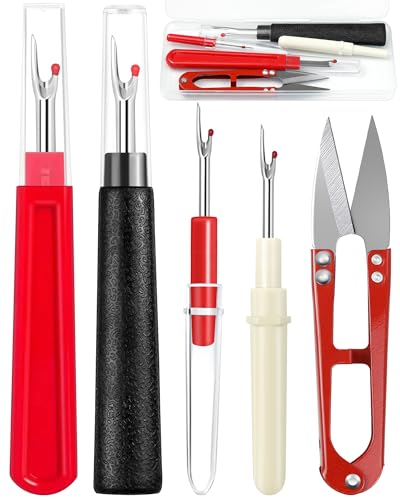Are you new to sewing and looking for a fun project to get started? Sewing a simple tote bag is the perfect way to learn the basics while creating something practical. I remember how exciting it was to make my first tote—it felt amazing to carry something I crafted with my own hands.
In this guide, I’ll walk you through each step, from choosing the right fabric to stitching it all together. Whether you’re aiming for a sturdy everyday bag or a chic accessory, this tutorial will help you sew with confidence and achieve great results.
Materials Needed
- Fabric: I use 1 yard of durable cotton or canvas for the exterior.
- Lining: If lining the bag, I select 1 yard of lightweight fabric.
- Thread: I choose strong polyester thread that matches my fabric color.
- Sewing Machine: I ensure my machine can handle straight stitching and thicker fabrics.
- Cutting Tools: I use sharp fabric scissors and a rotary cutter for precise cuts.
- Measuring Tools: I rely on a measuring tape and a ruler for accurate measurements.
- Pins and Needles: I gather pins to secure fabric pieces and needles for any hand sewing.
- Iron and Ironing Board: I have an iron and ironing board to press seams for a neat finish.
Choosing the Right Fabric
Selecting the appropriate fabric ensures your tote bag is both durable and stylish. Consider factors like strength, texture, and appearance when making your choice.
Types Of Fabric Suitable For Tote Bags
- Canvas: Offers high durability, suitable for heavy items.
- Cotton: Lightweight and versatile, available in various prints.
- Denim: Provides a sturdy structure, ideal for everyday use.
- Linen: Adds a natural texture, perfect for a sophisticated look.
- Jute: Eco-friendly option, great for a rustic style.
Selecting The Appropriate Thread
- Polyester Thread: Strong and colorfast, ideal for heavy fabrics like canvas and denim.
- Cotton Thread: Soft and breathable, best for lightweight fabrics such as cotton and linen.
- Heavy-Duty Thread: Suitable for reinforcing seams, ensuring extra durability.
- Matching Colors: Choose thread that complements or contrasts with your fabric for a polished finish.
Tools Required
To sew a simple tote bag, gather the necessary tools. Below are the essential tools and optional items to improve efficiency.
Essential Sewing Tools
I rely on these essential tools:
- Sewing machine: Ensures durable seams, provided it can perform straight stitching.
- Fabric: Requires one yard of sturdy cotton or canvas and one yard of lightweight lining.
- Thread: Needs strong polyester thread suitable for heavy fabrics.
- Scissors: Must be sharp fabric scissors for precise cuts.
- Measuring tape: Guarantees accurate measurements for each step.
- Pins and needles: Secure fabric pieces before sewing, preventing shifts.
- Iron and ironing board: Press seams for a neat finish, maintaining fabric quality.
Optional Tools For Enhanced Efficiency
- Rotary cutter: Speeds up fabric cutting, provided you have a cutting mat.
- Cutting mat: Protects surfaces and maintains blade sharpness when using a rotary cutter.
- Seam ripper: Corrects mistakes easily, preventing fabric damage.
- Fabric markers: Marks fabric without stains or damage for accurate cutting.
- Pinking shears: Prevents edges from fraying, extending the bag’s lifespan.
Step-By-Step Sewing Instructions
Follow these steps to create your simple tote bag. Each section provides detailed guidance to ensure a successful project.
Cutting The Fabric
- Measure and Mark
- Exterior Fabric: Cut two rectangles, each 15 inches wide and 16 inches tall.
- Lining Fabric (optional): Cut two rectangles, each 15 inches wide and 16 inches tall.
- Handles: Cut two strips, each 22 inches long and 1.5 inches wide.
- Prepare the Fabric
- Use a rotary cutter or sharp fabric scissors for clean edges.
- Press the fabric pieces with an iron to remove wrinkles before cutting.
Assembling The Pieces
- Pin the Layers
- Place the exterior fabric right sides together.
- If using lining, place it right sides together separately.
- Pin along the side and bottom edges, leaving the top open.
- Sew the Sides and Bottom
- Stitch along the pinned edges with a 0.5-inch seam allowance.
- Reinforce the corners with a backstitch for durability.
- Attach the Lining (optional)
- Sew the lining pieces similarly to the exterior.
- Insert the lining into the exterior bag, wrong sides facing.
- Align the top edges and pin in place.
Sewing The Handles
- Prepare the Handles
- Fold each handle strip in half lengthwise, right sides together.
- Press with an iron to create a crisp fold.
- Sew along the long edge with a 0.25-inch seam allowance.
- Attach the Handles to the Bag
- Turn the handles right side out.
- Position each handle 3 inches from the sides of the bag’s top edge.
- Pin the handles in place and reinforce with stitching.
- Final Adjustments
- Topstitch around the top edge of the bag for a finished look.
- Press all seams and edges to ensure a neat appearance.
By following these steps, you’ll create a sturdy and stylish tote bag perfect for everyday use.
Tips For Beginners
Starting your first tote bag project is exciting. Here are some tips to ensure a smooth sewing experience.
Common Mistakes To Avoid
- Measuring Incorrectly
Double-check all measurements before cutting fabric to prevent errors in size and shape.
- Choosing the Wrong Fabric
Select durable materials like canvas or denim to ensure your tote lasts.
- Skipping Seam Pressing
Press seams after sewing to achieve a neat and professional finish.
- Neglecting Handle Reinforcement
Reinforce handles with multiple stitches or bar tacks to ensure they can support weight.
- Ignoring Fabric Grain
Align fabric pieces with the grain to enhance the bag’s structure and durability.
Time-Saving Techniques
- Pre-Cutting Fabric Pieces
Cut all fabric pieces at once to streamline the assembly process.

- Using a Template
Create or print a template to ensure consistent and accurate cuts every time.
- Leveraging Sewing Machine Features
Utilize features like automatic buttonholes and stitch memory to speed up sewing tasks.
- Organizing Materials Ahead
Arrange all materials and tools before starting to minimize interruptions.
- Batch Processing Steps
Complete similar steps for both the exterior and lining simultaneously to save time.
Customizing Your Tote Bag
Customizing your tote bag enhances both its functionality and style. Here are some effective ways to personalize your design.
Adding Pockets
« How to Thread a Sewing Machine for the First Time: 7 Secrets Every Beginner Must Know
Unlock the Secret to Perfect Decor: How to Sew a Corded Seam Like a Pro »
Integrating pockets provides additional storage and organization. To add exterior pockets, follow these steps:
- Cut Fabric: Measure and cut two 6×6-inch squares from your exterior fabric.
- Position Pockets: Place each square 2 inches from the side edges and 1 inch below the top edge of the exterior fabric.
- Sew Edges: Stitch three sides of each pocket, leaving the top open for access.
- Attach Pockets: Secure the sewn pockets to the exterior fabric before assembling the main bag.
For interior pockets:
- Cut Interior Fabric: Cut an 8×6-inch rectangle from the lining fabric.
- Position Pocket: Center the rectangle inside the lining fabric, aligning it with the bag’s opening.
- Sew Sides and Bottom: Stitch three sides of the pocket, leaving the top open for items to be easily accessible.
Personalizing With Embellishments
Embellishments add a unique touch to your tote bag. Consider the following options:
- Embroidery: Use colorful threads to create designs or patterns on the exterior fabric. Simple stitches like satin or running stitches work well for beginners.
- Appliqué: Attach fabric shapes or motifs to the bag’s surface. Cut your chosen shapes, place them on the fabric, and sew around the edges for a decorative effect.
- Fabric Paint: Apply stencils to paint precise patterns. Allow the paint to dry completely to prevent smudging.
- Decorative Elements: Add buttons, beads, or sequins along the edges or across the surface for extra texture and visual interest.
These embellishments not only enhance the appearance of your tote bag but also reflect your personal style and creativity.
Conclusion
I’m thrilled you took on this sewing project and created your very own tote bag. There’s something incredibly satisfying about using a bag you made with your own hands.

As you continue your sewing journey you’ll find endless possibilities to customize and personalize your creations. Keep experimenting and enjoy every stitch along the way.

















